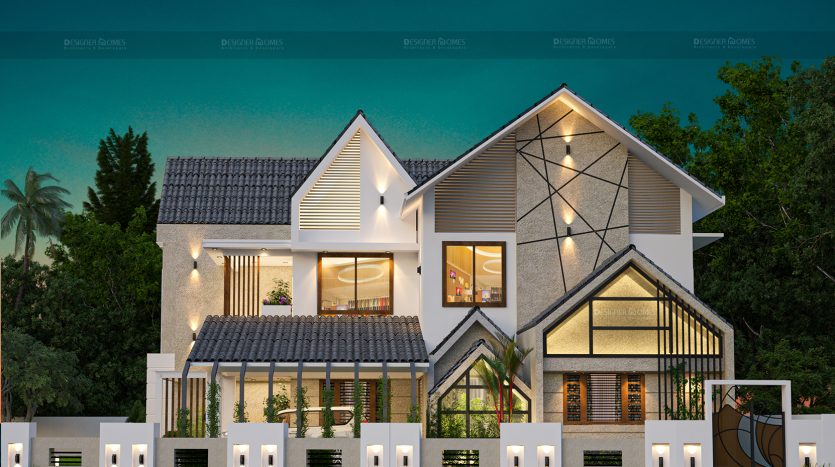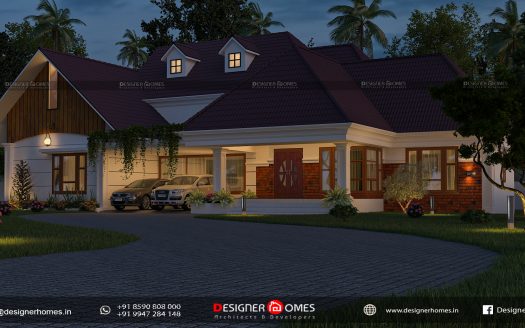Started Since :2002
Designer : Top Architects in Ernakulam
Estimated Cost : ₹ 93 Lakhs
Design Type : Exterior
Contact Designer- 5 Bedrooms
- 5 Bathrooms
- 4673 Sq Feet
- 85.4 Cent
Design Description
Modern architecture
Modern architecture, or modernist architecture, was an architectural style based upon new and innovative technologies of construction, particularly the use of glass, steel, and reinforced concrete; the idea that form should follow function (functionalism); an embrace of minimalism; and a rejection of ornament.
Kerala architectural esthetics
Kerala architecture is a kind of architectural style that is mostly found in the Indian state of Kerala. Kerala’s style of architecture is a unique Hindu temple architecture that emerged in the southwest part of India, in its striking contrast to Dravidian architecture which is normally practiced in other parts of South India.
The architecture of Kerala has been performed/followed according to Indian Vedic architectural science (Vastu Shastra) and part of Dravidian Architecture, one of the three styles of temples mentioned in the ancient books of Vastu Shastra.
he Tantrasamuchaya, Thachu-Shastra, Manushyalaya-Chandrika, and Silparatna are important architectural sciences, which have had a strong impact in Kerala Architecture style.
he Manushyalaya-Chandrika, a work devoted to domestic architecture is one such science that has its strong roots in Kerala.
The architectural style has evolved from Kerala’s peculiar climate and long history of influences of its major maritime trading partners like Chinese, Arabs and Europeans.
The natural building materials available for construction in Kerala are stones, timber, clay and palm leaves. Granite is a strong and durable building stone; however its availability is restricted mostly to the highlands and only marginally to other zones.
Owing to this, the skill in quarrying, dressing and sculpturing of stone is scarce in Kerala. Laterite on the other hand is the most abundant stone found as outcrops in most zones.
Soft laterite available at shallow depth can be easily cut, dressed and used as building blocks. It is a rare local stone which gets stronger and durable with exposure at atmospheric air. Laterite blocks may be bonded in mortars of shell lime, which have been the classic binding material used in traditional buildings.
Lime mortar can be improved in strength and performance by admixtures of vegetable juices. Such enriched mortars were used for plastering or for serving as the base for mural painting and low relief work.
Sree Padmanabhapuram Palace
The typical wood carvings made on ceilings of Sree Padmanabhapuram Palace From the limitations of the materials, a mixed mode of construction was evolved in Kerala architecture. The stone work was restricted to the plinth even in important buildings such as temples. Laterite was used for walls.
The roof structure in timber was covered with palm leaf thatching for most buildings and rarely with tiles for palaces or temples. The exterior of the laterite walls were either left as such or plastered with lime mortar to serve as the base for mural painting. kmhp.in
The sculpturing of the stone was mainly molding in horizontal bands in the plinth portion (adhistans) whereas the carving of timber covered all elements _ pillars, beams, ceiling, rafters and the supporting brackets.
The Kerala murals are paintings with vegetable dyes on wet walls in subdued shades of brown.
The indigenous adoption of the available raw materials and their transformation as enduring media for architectural expression thus became the dominant feature of the Kerala style designer homes.
193/s, 1st floor, AAk building,moolepadan nagar, opp.polytechnic, kallamassery
Kalamassery
Cochin
Kerala






















